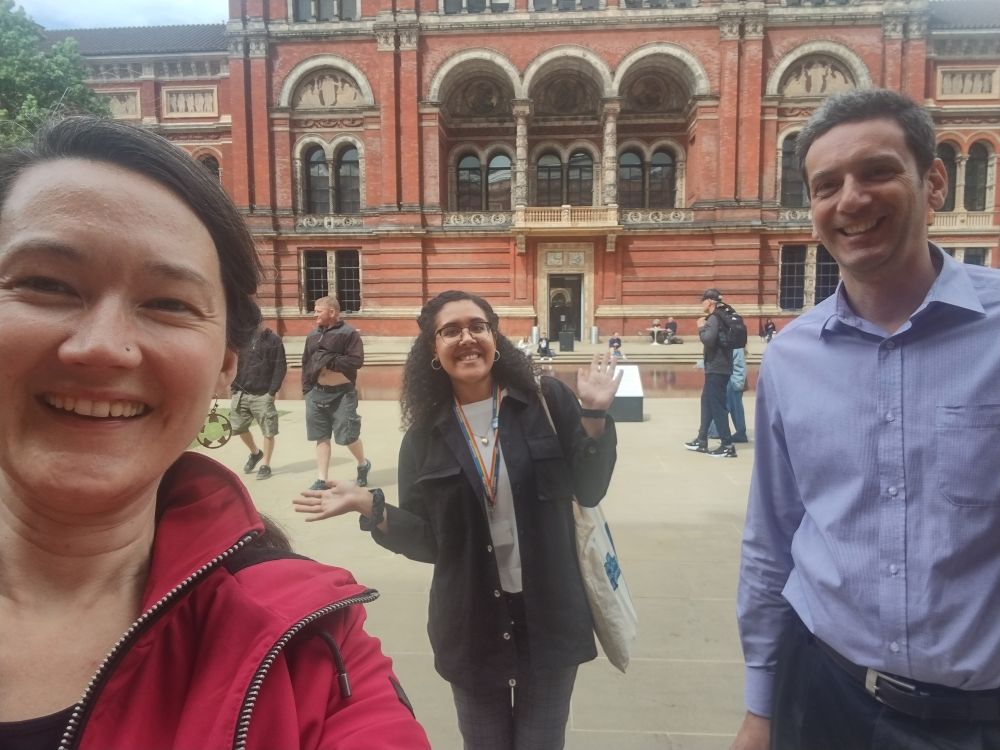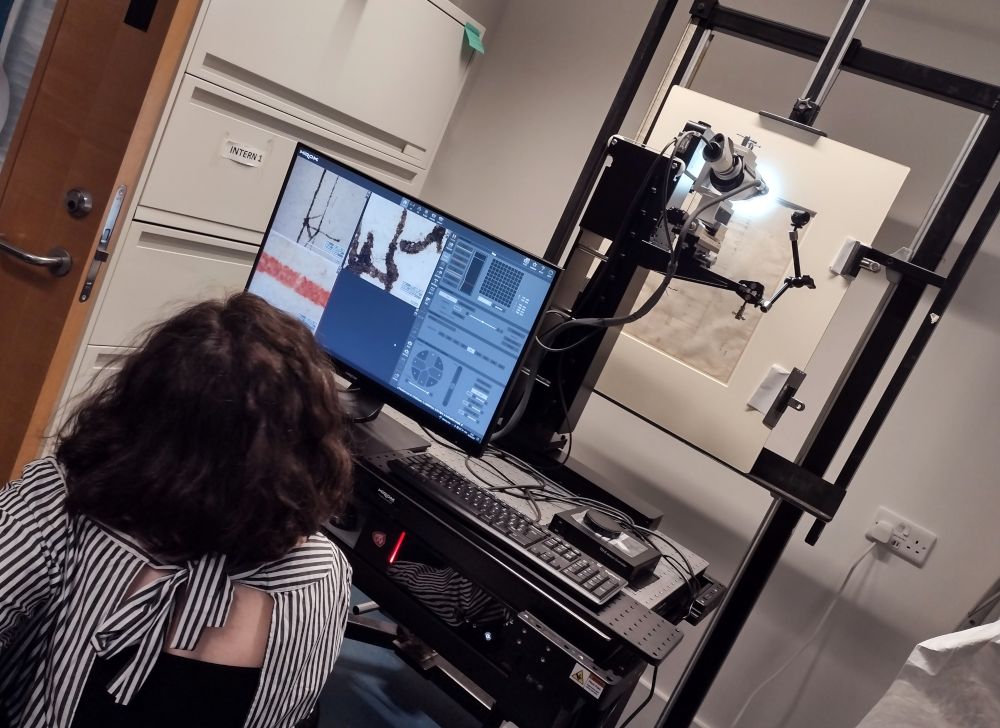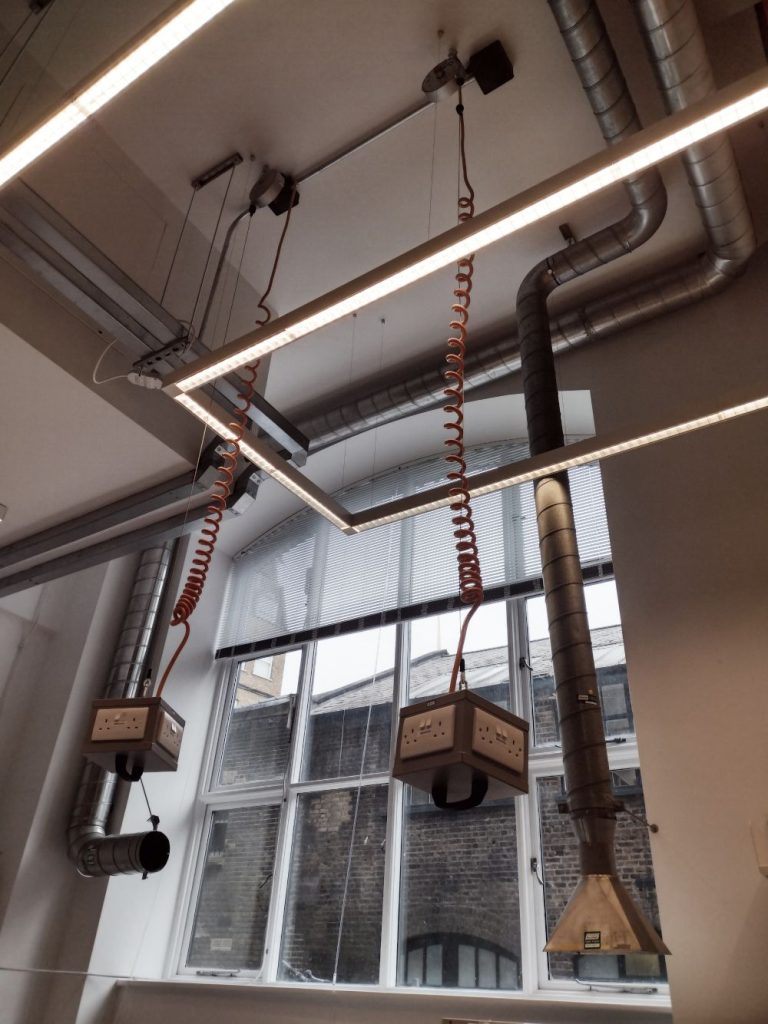On Tuesday 10 May, IMSE staff Leah Adamson and Isabella von Holstein joined Ambrose Taylor of the Science and Engineering for Cultural Heritage (SERCH) network for a tour of the new Victoria and Albert Museum Conservation Science laboratory.

We’re neighbours: the V&A is just down the road from Imperial’s South Kensington Campus.
Senior Scientist Lucia Burgio led the tour and Lab Coordinator Valentina Risdonne demonstrated the equipment. Head of Conservation Pedro Gaspar joined us to discuss future collaborations.
The V&A conservation science lab was recently upgraded thanks to a £2.3 million grant from the Arts and Humanities Research Council. This enabled the lab to buy state-of-the-art equipment including new XRF (X-ray fluorescence) spectrometers, a range of digital microscopes, an SEM-EDX (scanning electron microscope with energy dispersive X-ray analysis) and a suite of other high-tech instruments.

The V&A lab enables conservation science within the V&A. It allows conservators and scientists to examine an object at very high resolution. They use non-destructive spectroscopic analyses to establish how it was made, whether it is damaged, whether it has been repaired and how it can be best conserved.
IMSE helped set up the SERCH network in 2021. It’s a network of excellence within Imperial College London, bringing together scientists, engineers, conservators and curators. The aim of the network is to foster collaboration, in two ways:
- SERCH gives conservators and curators access to high grade scientific thinking and equipment to analyse cultural heritage objects. Here’s an example from SERCH’S own Sergei Kazarian, applying ATR-FTIR spectroscopy to paintings, textiles and glass objects, among other types of materials.
- SERCH gives scientists interested in degradation processes, like corrosion and patination, access to objects which have been decaying for 10s or even 1000s of years. This allows investigation of very slow processes which are difficult to observe in other ways. Here’s an example from SERCH’s Ruoyu Zhang, looking at ageing of paint.

The SERCH network have curated a series of webinars on science in cultural heritage, including using AI to examine underdrawings in paintings, using advanced spectroscopy methods to analyse the paint, and using lasers to clean it.